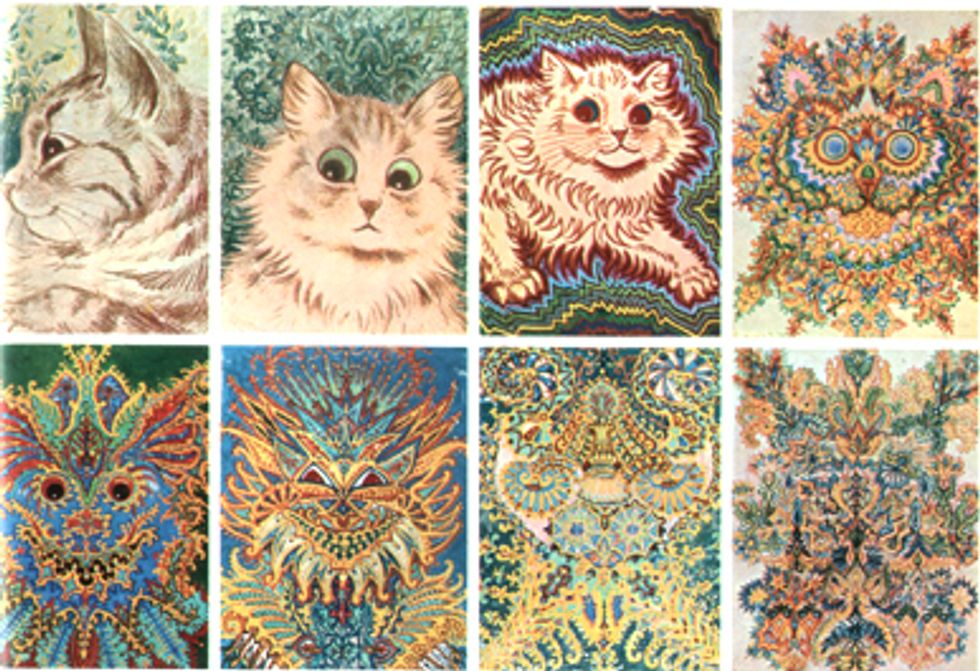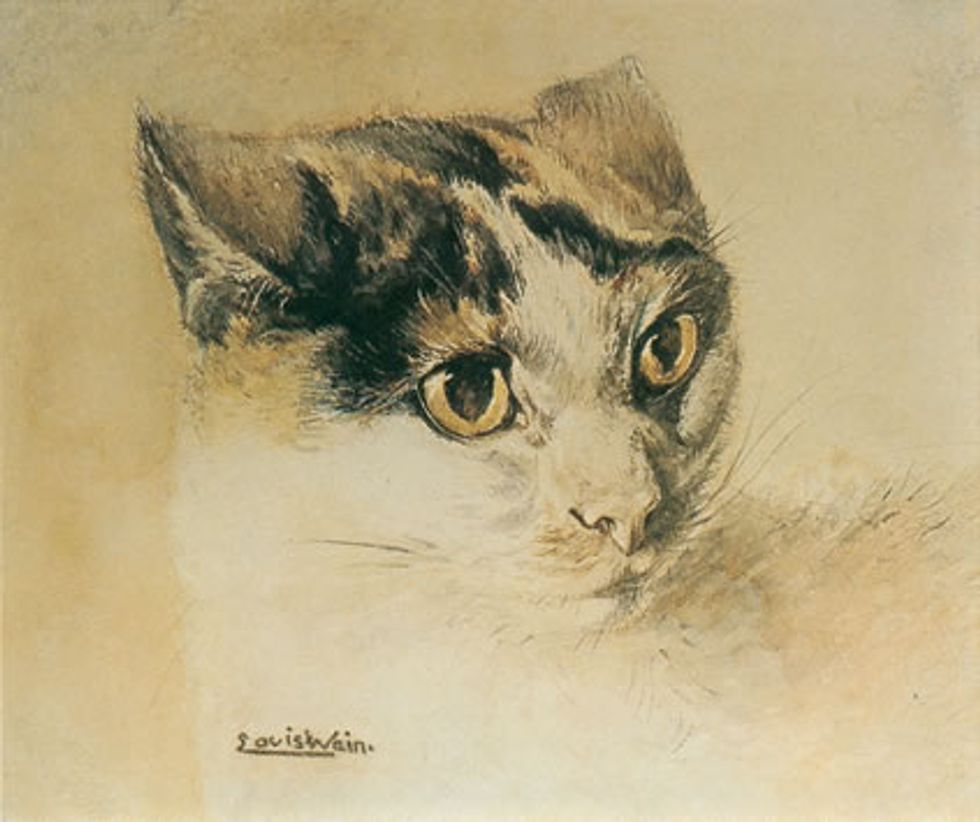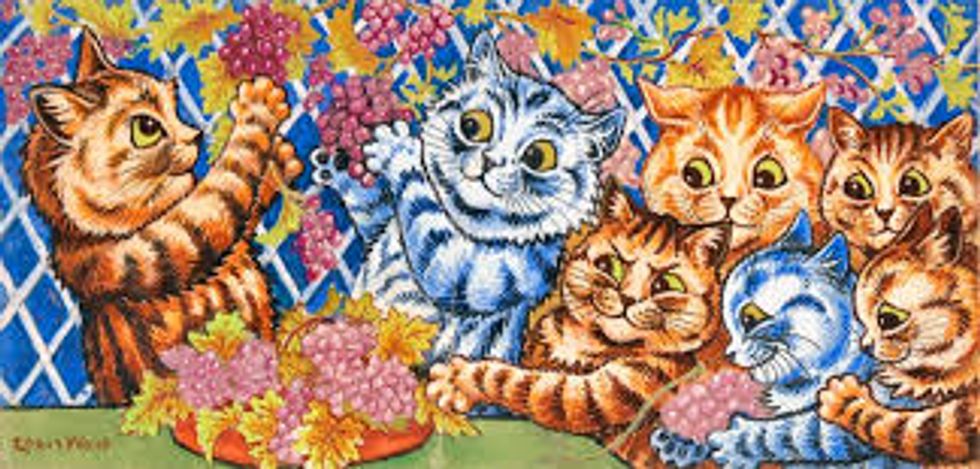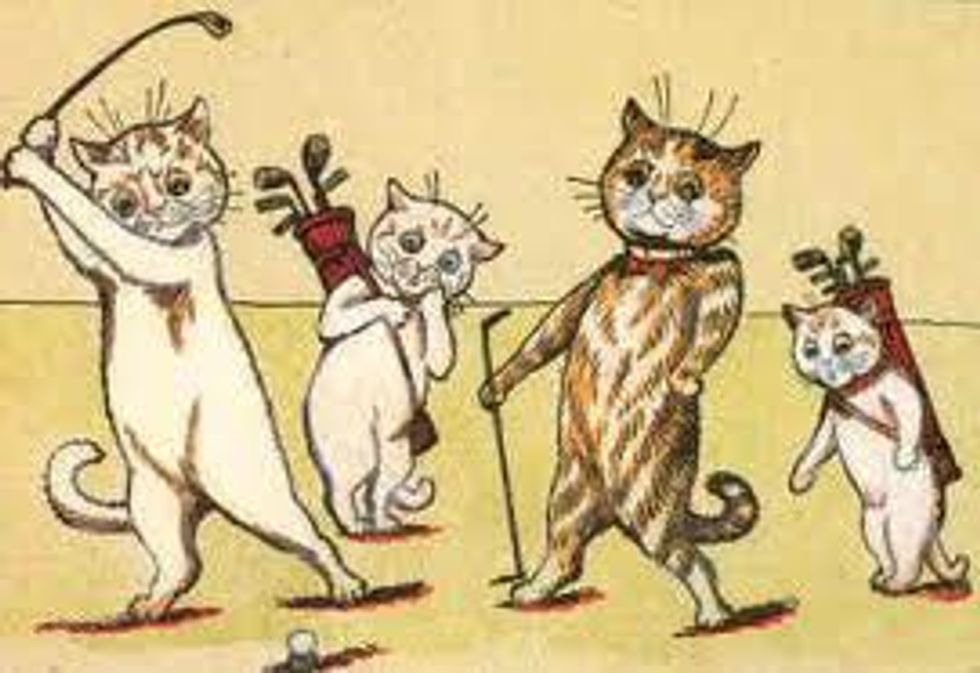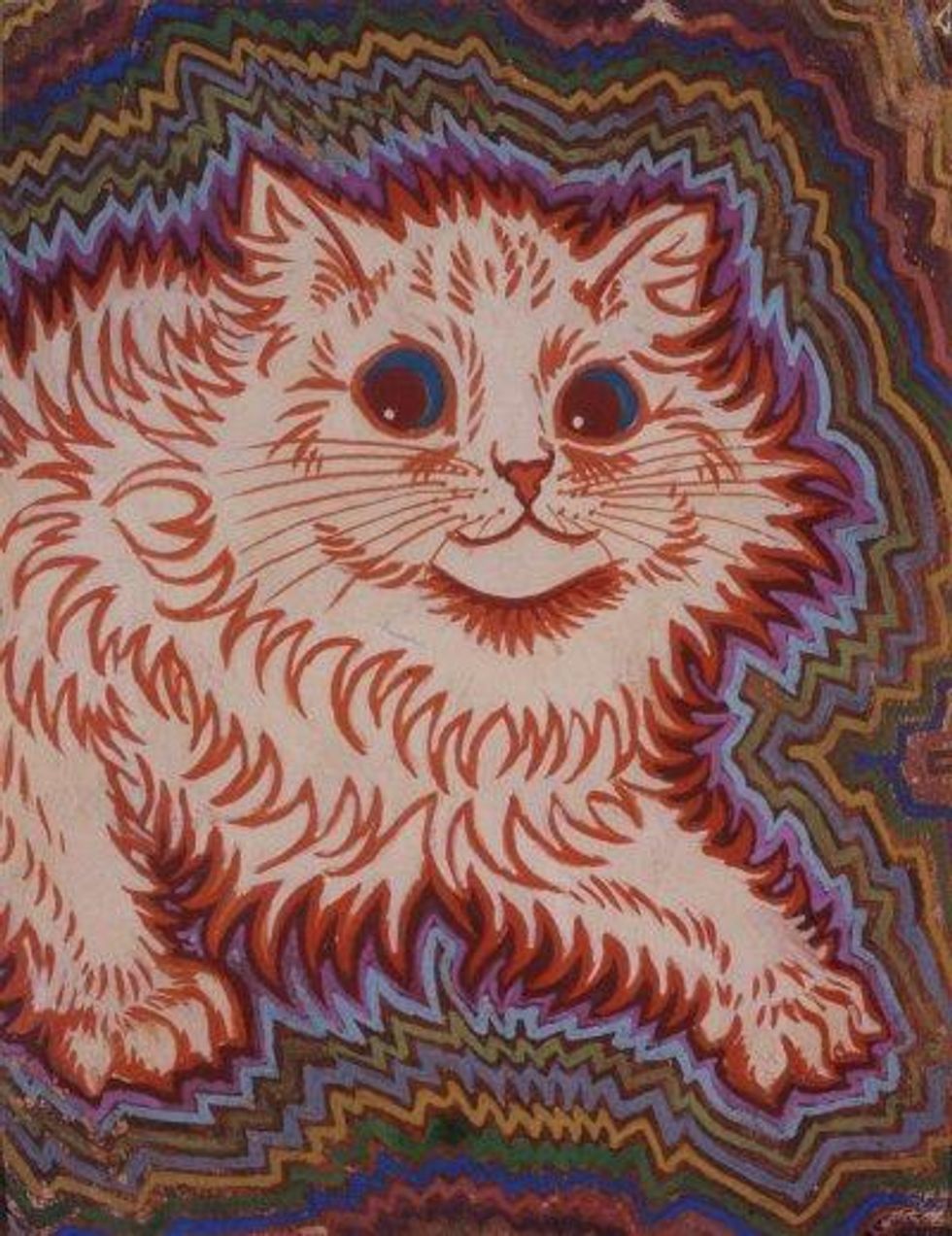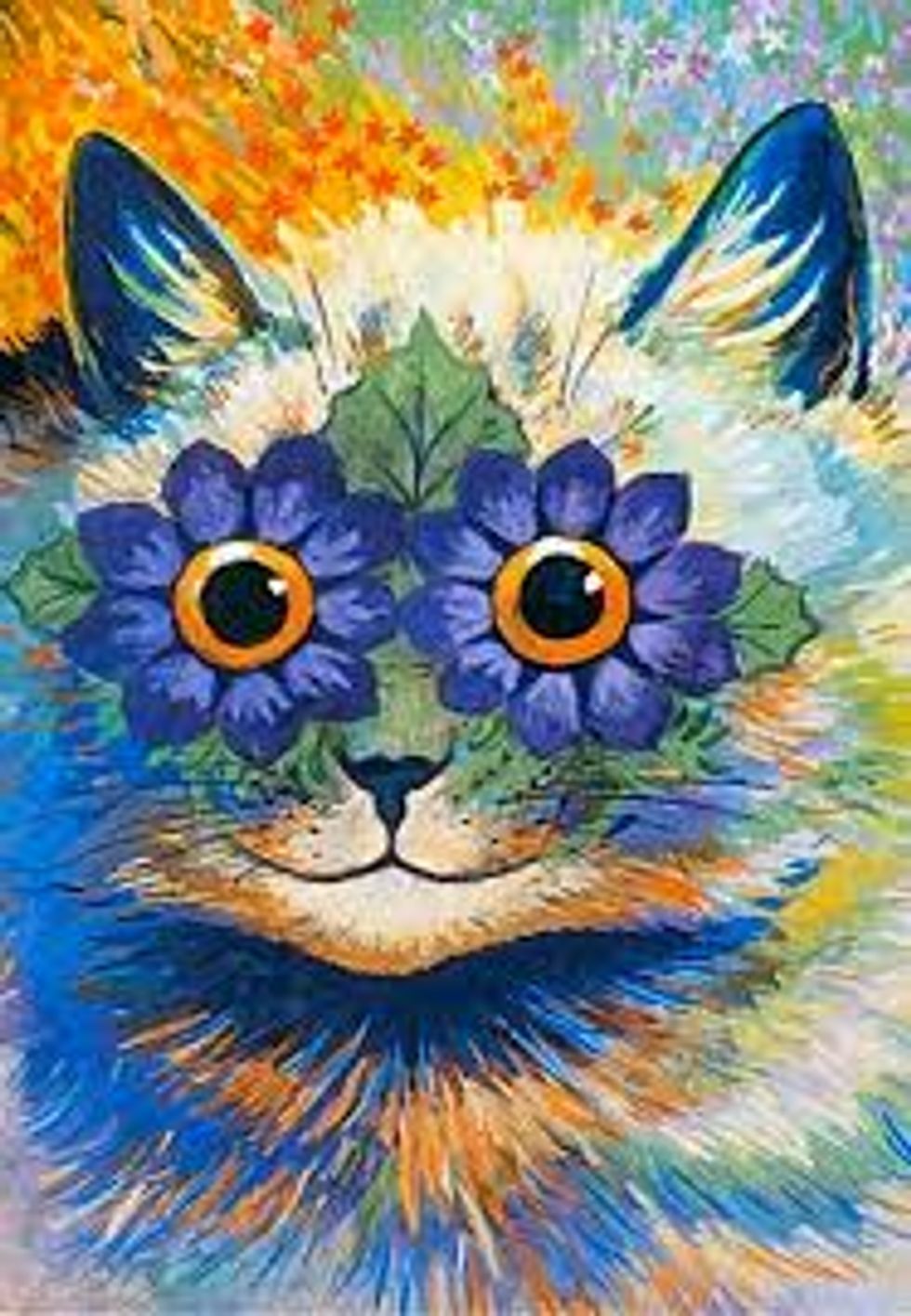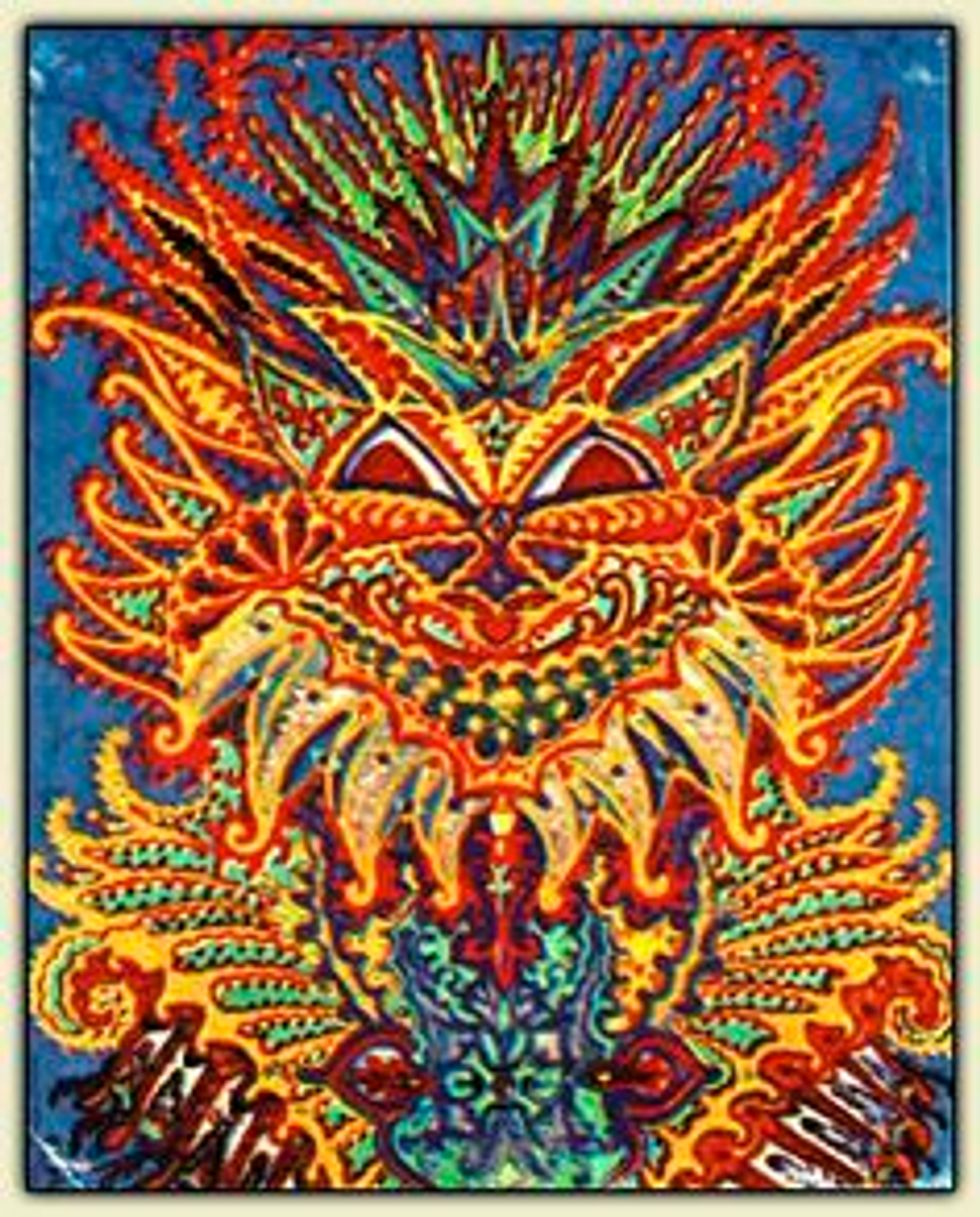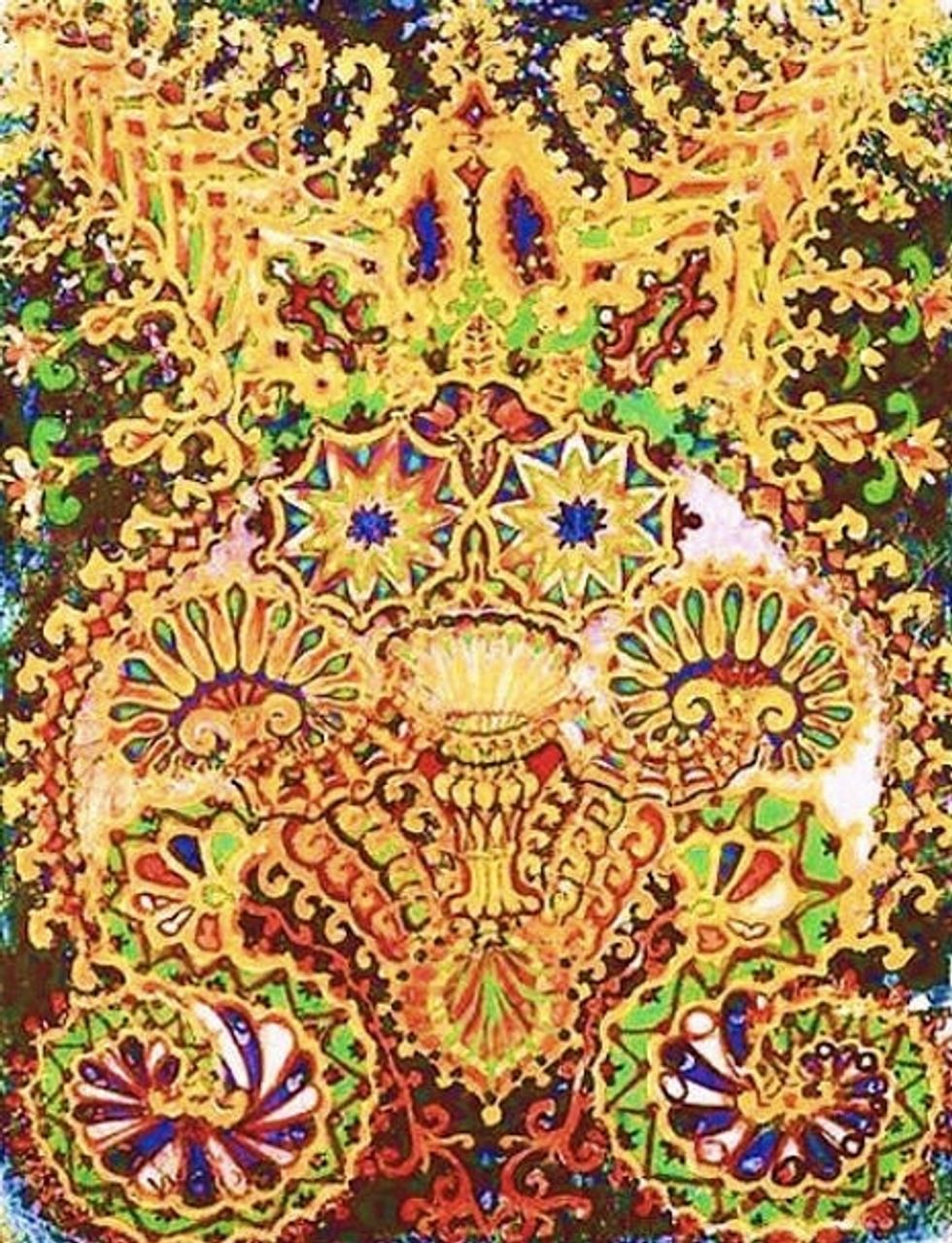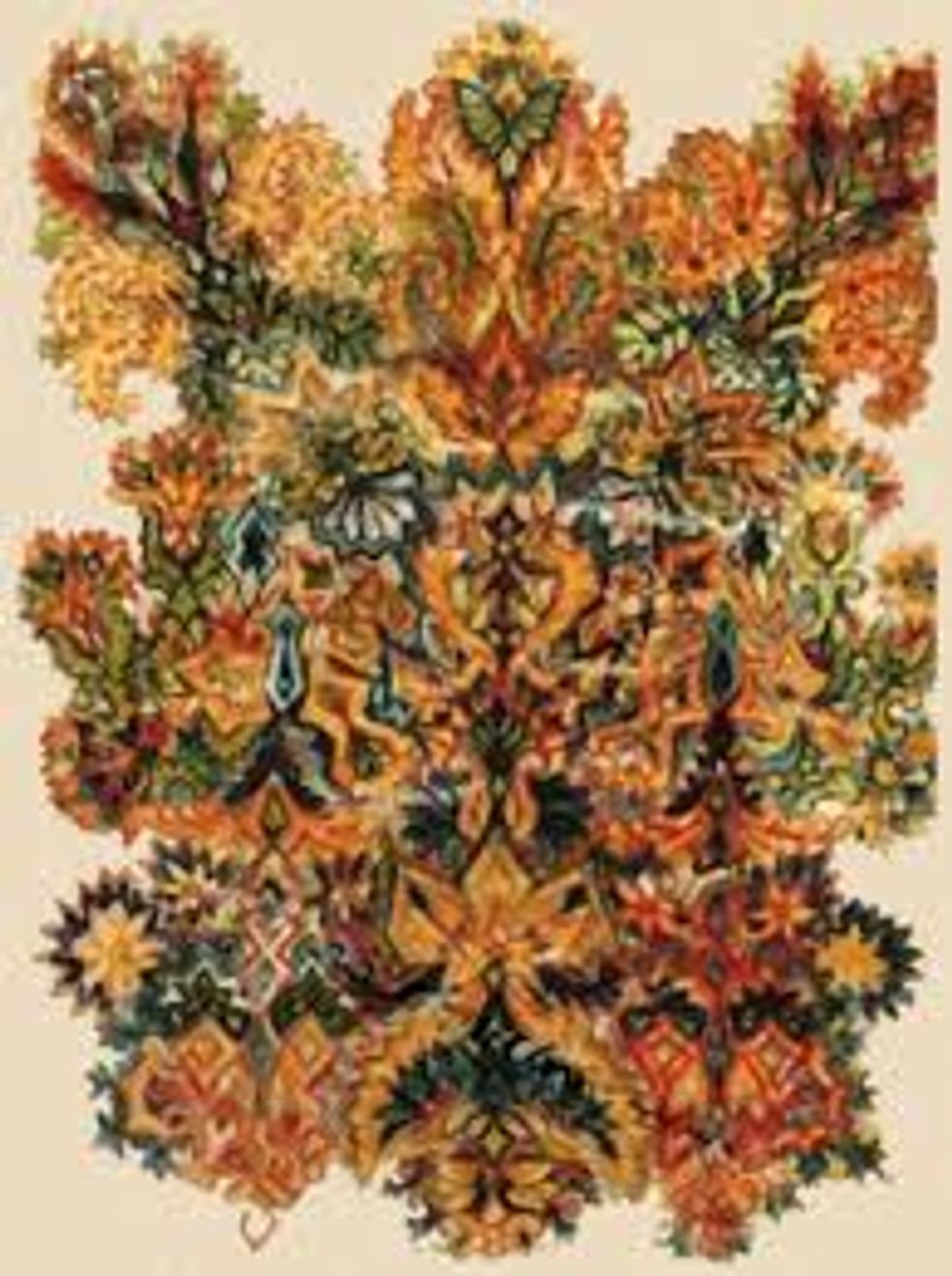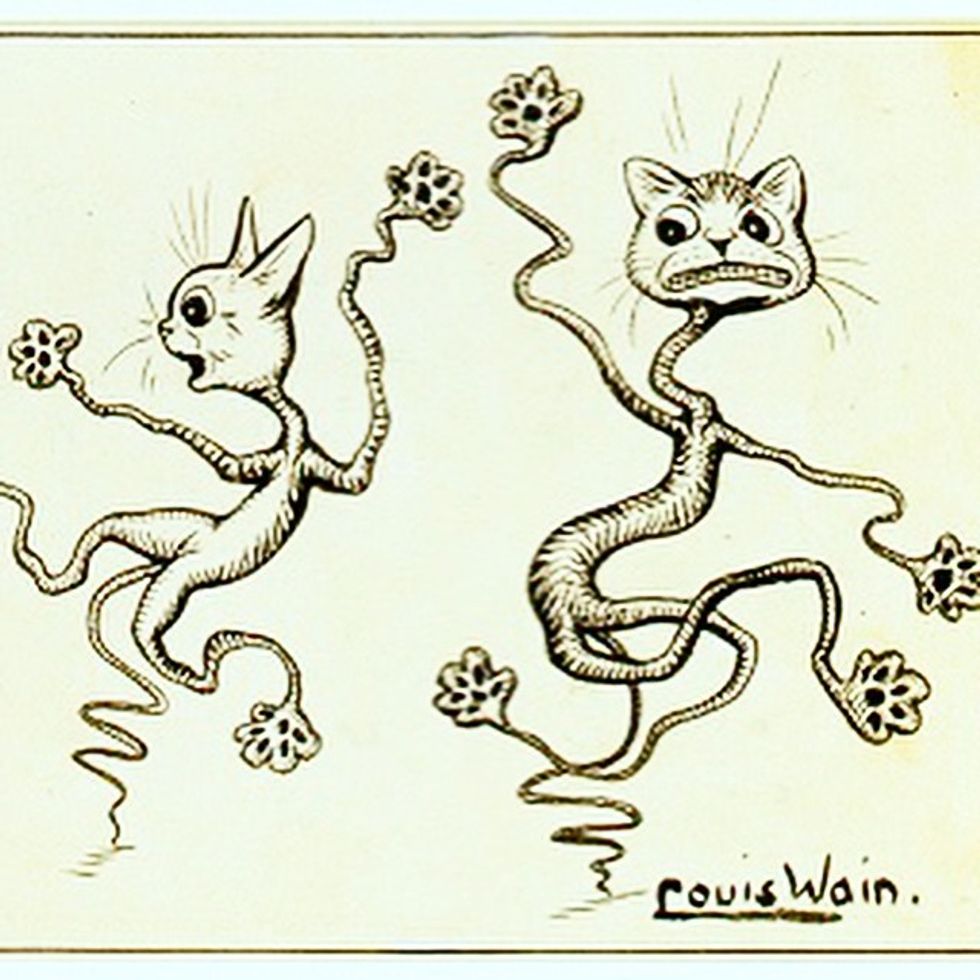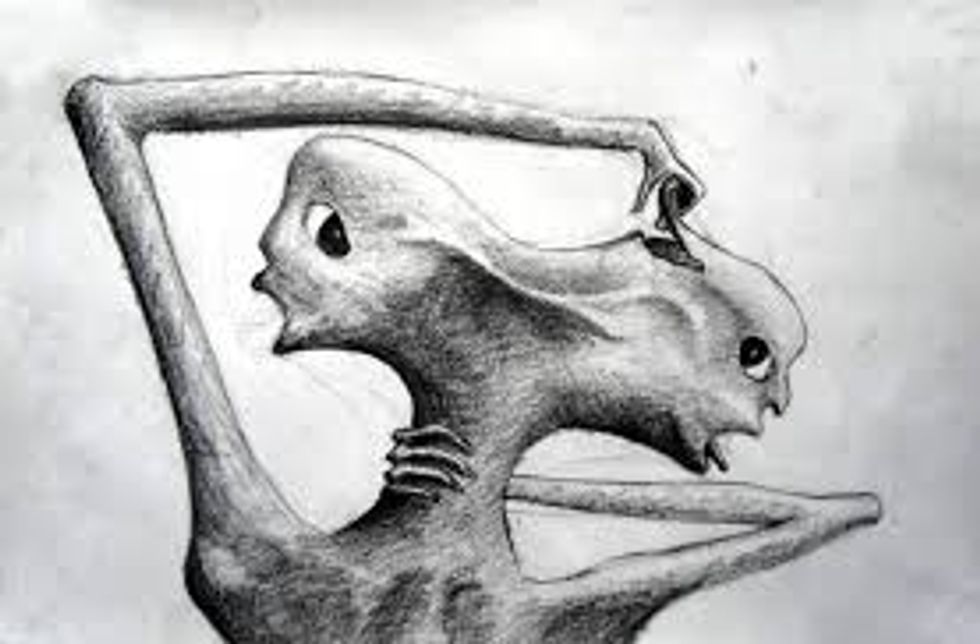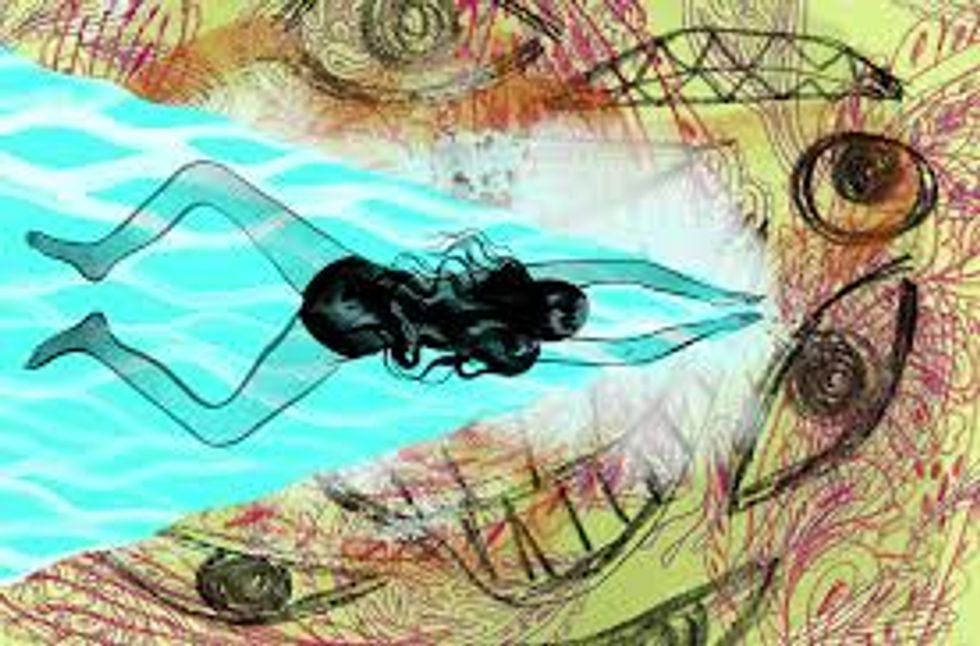When a person decides to become an artist, usually they intend to create vivid images of something they are passionate about to please both themselves and others. Louis Wain was no different. His drawings of anthropomorphic cats brought joy to the hearts of all who viewed them whilst only further fueling his passion for felines. However, the end result of Wain's artistic career, while perhaps overlooked by most, proved to be one of the most significant records in the history of psychology.
Louis Wain (1860-1939) was an English artist, primarily known for his drawings of cats, often in an anthropomorphic style, using flexible, humanlike expressions and often walking upon two legs.
Early on in Wain's career, he mostly
used a naturalistic style, depicting cats as they would appear in the
real world.
However, it was his lovable and often humorous caricaturistic style that caught the public's eye.
As time progressed, observers of Wain's work could obviously detect a change in his style. What once depicted cutesy and lovable-looking cats now depicted nervous-looking, paranoid cats, accompanied by psychedelic backdrops, a far stretch from what observers were used to seeing from him.
What appeared to simply be a change of style was far more serious than the public could imagine. Wain's behavior grew erratic, and he grew increasingly delusional. As symptoms persisted, so did the abstractness of Wain's artwork.
Wain suffered from schizophrenia, a mental disorder characterized by psychosis, delusions, paranoia and a detachment from reality. In most cases, one is not born with schizophrenia, and will develop it during the early ages of adulthood, although there are exceptions. Even to outsiders, Wain's artwork now showed clear signs of change, and a clear detachment from his previous styles. Wain's cats became increasingly less catlike, until they were barely recognizable as cats at all.
Wain's loved ones could no longer give him the proper care he needed, so he was sent to the Bethlehem Royal Hospital, a psycheatric hospital, for proper care. Here he spent the final years of his life, drawing his artwork whilst surrounded by the cats he so dearly loved.
Wain's legacy and influence on the perception of psychology are enormous. While we still cannot clearly understand what one perceives when dealing with schizophrenia (everyone has different experiences), the artwork produced by those who suffer from the illness can give us some insight on what they see and how they feel.
Wain was never officially diagnosed with schizophrenia at the time, but modern day psychologists have almost unanimously agreed that this was the condition he suffered from. However, it is debatable whether or not these paintings and their progression from naturalism to psychedelia have any significance in regards to Wain's mental illness. It is possible that Wain merely adopted a different style, but this theory can possibly be disproved by Wain's later works, which barely depict cats at all, despite Wain only ever drawing cats. Unfortunately, because Wain's life was so long ago, and understanding of mental illness was so primitive at the time, we may never know the true answer. Were these drawings merely an adaptation of a new style, or did they depict how Wain saw cats through the tinted lens of schizophrenia?

